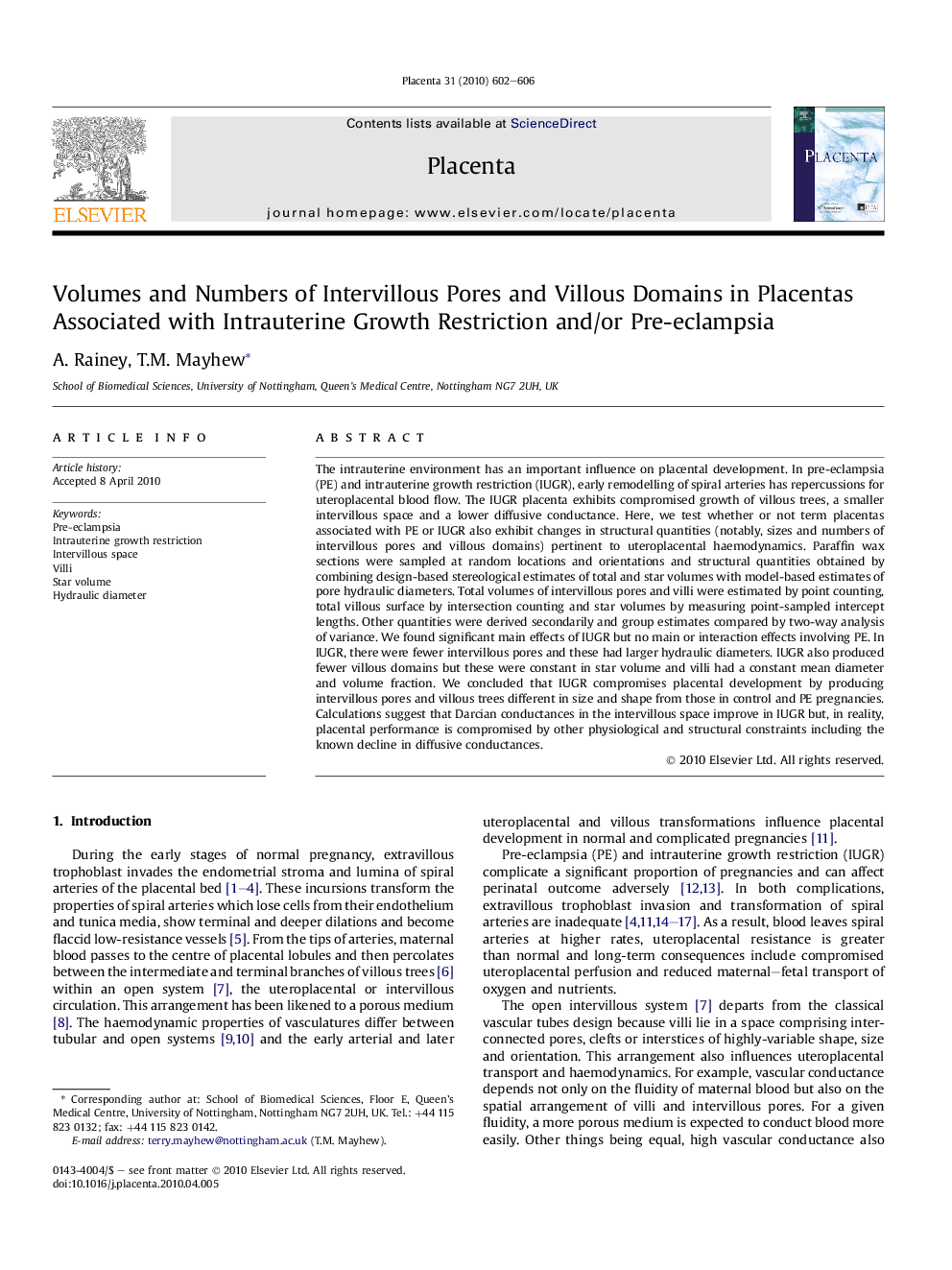| Article ID | Journal | Published Year | Pages | File Type |
|---|---|---|---|---|
| 2789235 | Placenta | 2010 | 5 Pages |
The intrauterine environment has an important influence on placental development. In pre-eclampsia (PE) and intrauterine growth restriction (IUGR), early remodelling of spiral arteries has repercussions for uteroplacental blood flow. The IUGR placenta exhibits compromised growth of villous trees, a smaller intervillous space and a lower diffusive conductance. Here, we test whether or not term placentas associated with PE or IUGR also exhibit changes in structural quantities (notably, sizes and numbers of intervillous pores and villous domains) pertinent to uteroplacental haemodynamics. Paraffin wax sections were sampled at random locations and orientations and structural quantities obtained by combining design-based stereological estimates of total and star volumes with model-based estimates of pore hydraulic diameters. Total volumes of intervillous pores and villi were estimated by point counting, total villous surface by intersection counting and star volumes by measuring point-sampled intercept lengths. Other quantities were derived secondarily and group estimates compared by two-way analysis of variance. We found significant main effects of IUGR but no main or interaction effects involving PE. In IUGR, there were fewer intervillous pores and these had larger hydraulic diameters. IUGR also produced fewer villous domains but these were constant in star volume and villi had a constant mean diameter and volume fraction. We concluded that IUGR compromises placental development by producing intervillous pores and villous trees different in size and shape from those in control and PE pregnancies. Calculations suggest that Darcian conductances in the intervillous space improve in IUGR but, in reality, placental performance is compromised by other physiological and structural constraints including the known decline in diffusive conductances.
